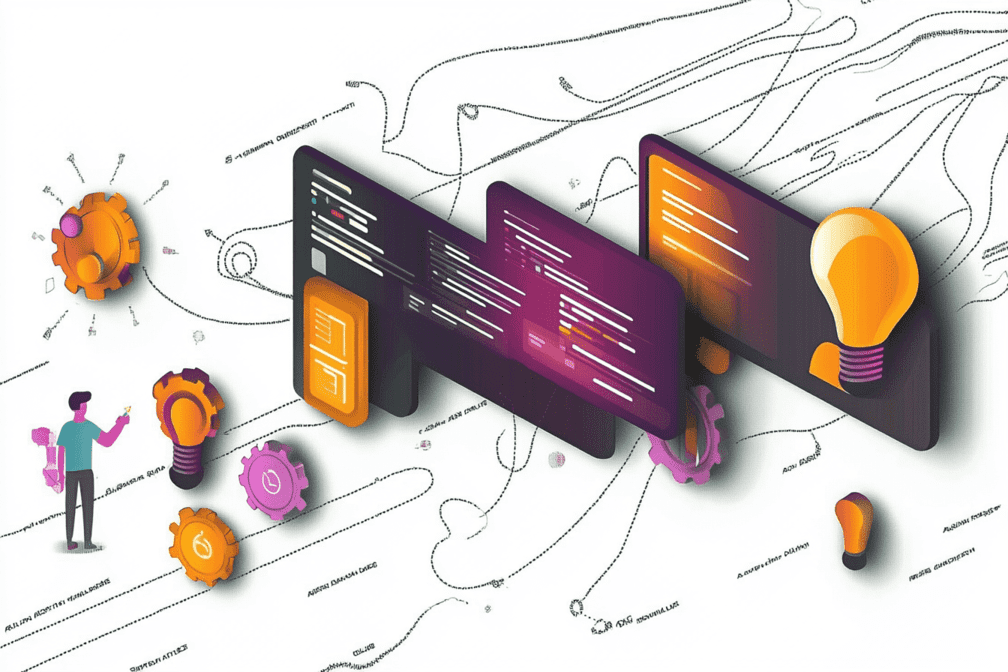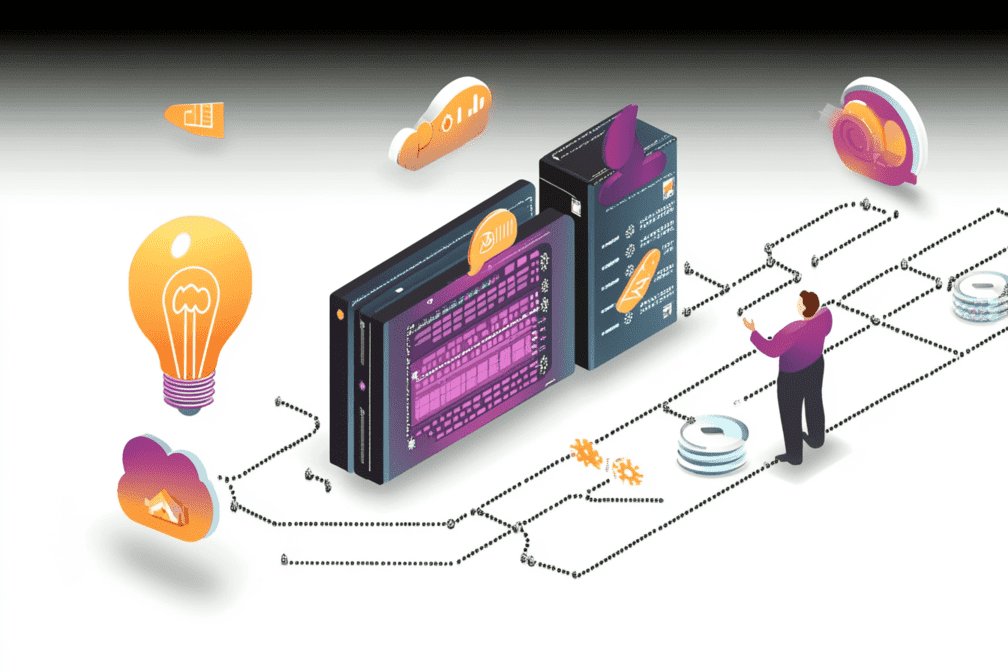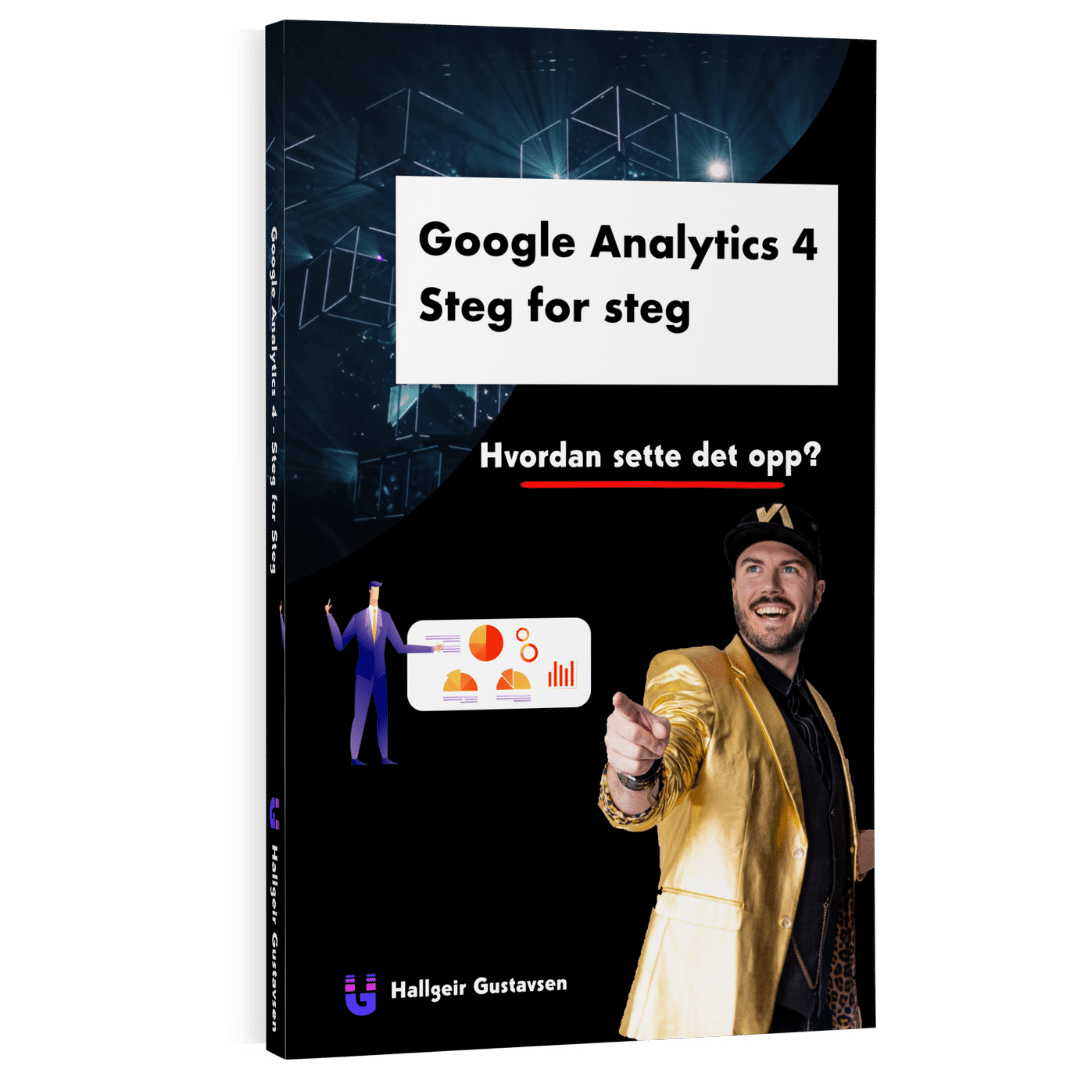How to get the most results from your efforts?
Traffic system for digital marketing
- how systematic optimization helps you reach your goals
Understanding and utilizing an effective traffic system in your marketing is essential.
A good traffic system ensures not only increased visibility, but also that the right audience finds its way to your products or services.
At the same time, results-driven marketing has become a key strategy for maximizing ROI and achieving business goals.
In this blog post, we'll explore how the combination of an optimal traffic system and performance marketing can lead to significant growth. We will also look at how systematic optimization plays a critical role in this process.

Understanding the traffic system in digital marketing
Elements of a traffic system
A traffic system consists of all the channels and tools that drive traffic to your website or digital platform. This includes:
- Search engine optimization (SEO): Improving your website's visibility in organic searches.
- Search engine marketing (SEM): Paid ads in search engines such as Google Ads.
- Social media: The platforms where you can engage and build relationships with your target audience.
- Email marketing: Direct communication with customers and prospects.
The customer journey
The traffic system influences every stage of the customer journey - from awareness to consideration and ultimately conversion. By understanding how customers interact with different channels, you can tailor your message to meet their needs at each stage.
The importance of quality traffic
It's not just about getting the most traffic, but about attracting relevant visitors who are more likely to convert. Quality over quantity is key.
What do you want to achieve?
Map the current situation
Knowledge
A comprehensive review of your current situation, including profile analysis, content effectiveness and competitor analysis. Identifies key targets for improvement and growth.
-
Analysis of current strategy
-
Identify immediate areas for improvement.
-
Strategy call to review opportunities
-
Proposed action plan
Operation and optimization
Improvement
Ongoing operation and optimization of your marketing activity. This includes content production, campaign management, performance tracking and iterative improvements based on analytics.
-
All points from Knowledge included.
-
Ongoing management and optimization of marketing.
-
Monthly calls for planning and review of activities.
-
Prioritized support with faster response times.
-
Access to exclusive webinars and advanced LinkedIn marketing resources.
Measures for sales and marketing
🚀 Scaling
Advanced strategies to scale your marketing and sales efforts on LinkedIn. Focus on expanding your reach, automating processes and integrating LinkedIn with your sales funnel for sustainable growth.
-
All points from Improvement included.
-
Advanced scaling strategies for marketing and sales teams.
-
Dedicated customer contact manager for personal support.
-
Tailored automation solutions to streamline LinkedIn activities.
-
Training sessions for your teams to ensure effective implementation.
What is results-driven marketing?
Core principles
Results-driven marketing focuses on measurable results, especially total profits, as the main indicator of success. This involves:
- Data-driven decision making: Using analytics and statistics over gut feelings and assumptions.
- Focus on ROI: Optimizing marketing activities for maximum ROI.
Benefits
- Better ROI: Resources are used more efficiently, leading to higher ROI.
- Increased accountability: Clear goals and measurements make it easier to hold teams accountable for results.
- Transparency: Everyone in the organization can see what's working and what's not.
Key components
- Key Performance Indicators (KPIs): Measurable values that show how effectively the company is achieving business goals.
- Analytics: Continuous collection and analysis of data to inform decisions.
- Continuous improvement: Based on the data, strategies are adjusted to improve results over time.


Integration of traffic system and performance marketing
The connection between the two
An optimal traffic system is the foundation on which performance marketing is built. By analyzing your traffic, you can identify which channels provide the best ROI and focus your efforts where they will have the most impact.
Use of data and analysis
- Tracking traffic sources: Using tools like Google Analytics, you can see where visitors are coming from.
- Conversion tracking: Understand which channels lead to a sale or desired action.
- Identification of profitable channels: Allocate resources to the channels that provide the highest ROI.
Optimization techniques
- A/B testing: Testing different versions of an ad or landing page to see what works best.
- Retargeting: Targeting ads to people who have already shown interest.
- Personalization: Customizing content and messages based on user behavior and preferences.
Strategies for systematic optimization
Establish clear goals and KPIs
- SMART goals: Specific, measurable, achievable, relevant and time-bound goals.
- Examples of KPIs: Conversion rate, cost per conversion, lifetime value of a customer.
Analysis of current traffic system
- Identify strengths and weaknesses: Which channels are performing well? Where is there room for improvement?
- Competitor analysis: See what your competitors are doing and learn from their successes and failures.
Implementation of improvements
- SEO optimization: Improve your website's content and technical structure for better ranking.
- Content strategy: Produce relevant and engaging content that attracts and retains the target audience.
- Paid advertising: Leverage SEM and social media to reach a larger and more targeted audience.
Continuous monitoring and adjustment
- Use of web analytics tools: Monitor traffic, user behavior and conversions.
- Adapt based on data: Adjust strategies in real time to maximize results.
Tools and technology
Marketing analytics tools
- Google Analytics: Track traffic and user behavior.
- Adobe Analytics: Advanced analytics for larger organizations.
Advertising platforms
- Google Ads: Paid search engine marketing.
- Facebook Ads: Targeted advertising on social media.
CRM systems
- HubSpot: Integrated platform for marketing, sales and customer service.
- Salesforce: Advanced CRM for customer management.
Automation and integration
- Marketing Automation: Automate repetitive tasks like email blasts and lead nurturing.
- API integrations: Connect disparate systems for a seamless workflow.


Challenges and considerations
Measuring the right data
- Avoid the wrong KPIs: Focusing on irrelevant measurements can lead to wrong decisions.
- Data overload: Too much data can be overwhelming; focus on what really matters.
Balance between short-term and long-term goals
- Short-term vs. long-term ROI: Investing in branding can have long-term benefits that aren't immediately visible.
- Budget allocation: Find a balance between different marketing activities.
Adapting to change
- Technological advances: Stay on top of new tools and platforms.
- Changes in consumer behavior: Be flexible and adapt strategies to market trends.
Privacy and data protection
- GDPR compliance: Ensure that all data collection and storage is in line with the legislation.
- Transparency with customers: Be open about how you use their data.
Success stories
Starbucks and relationship building
Starbucks has mastered the art of customer loyalty by using data to create personalized experiences. Their loyalty program provides valuable insights into customer behavior, which they use to personalize offers and communications.
Effective use of SEO
A local online store experienced a 150% increase in organic traffic after implementing a targeted SEO strategy. By optimizing product descriptions and blog content for relevant keywords, they reached a larger and more relevant customer base.
Lessons learned from the case studies
- Know your audience: Use data to understand your customers better.
- Customize and personalize: Tailor the experience to increase engagement and loyalty.
- Measure and optimize: Continuous monitoring and adjustment is the key to success.

Future trends
Technological innovations
- Artificial intelligence (AI): Improves data analysis and personalization.
- Machine learning: Automates optimization based on patterns in data.
- Voice search: Optimization for search via voice assistants such as Siri and Alexa.
Increased personalization
- Data-driven personalization: Using big data to create even more tailored experiences.
- Dynamic content: Websites and emails that adapt to user preferences in real time.
Omnichannel marketing
- Seamless integration: Customers expect a consistent experience across all channels.
- Cross-device tracking: Understand how customers interact with your brand across devices.
Conclusion
An effective traffic system combined with results-driven marketing is essential for businesses that want to succeed in today's digital landscape. By focusing on systematic optimization, data-driven decision-making and continuous improvement, you can not only reach, but exceed your business goals.
Call to action: Start by evaluating your current traffic system and implementing the principles of results-driven marketing. By taking these steps today, you'll put your business on the path to increased visibility, higher conversion rates and better profitability.
The road ahead: Stay on top of the latest trends and technologies. Digital marketing is constantly evolving, and those who adapt the fastest will be the most successful.
What do some of the people who work with me say?
"Hallgeir is easy to work with. He challenges your thinking and helps you see ideas from new angles. Every time we talk, he comes up with good suggestions for profitable campaigns and activities that we can do. If you need a sparring partner, coach or speaker, I can recommend Hallgeir. "
"Hallgeir advised on various aspects of content production, often helping to create the content to achieve the highest ROI. Vecora also researched the most effective demographic for my brand, helping me drill this down to the detail that was required. This was something I was having huge problems with. They took the time to learn about my unique approach to my work. Mine is an idiosyncratic approach, and to understand this takes an investment that has so far been disappointing when delegating this kind of work. This has not been the case with Vecora, and I feel I have finally found someone I can trust with something that has taken me years to establish."
"We got in touch with Hallgeir because we want to get better at being more visible, extroverted and interesting in social media, especially on LinkedIn. It's becoming increasingly important that all employees, especially those of us with market contact, are able to build their own brands and be a representative of the company's brand "out there". At the same time, it's important that when we are visible, we do so in a way that is engaging and interesting. Hallgeir has created a specially tailored program where he has helped us to build competence and confidence through "lectures" and assignments through a program where we have followed up the course participants over a couple of months. It's been both instructive and fun, as Hallgeir's form is just light-footed enough for everyone to be able to - and want to - keep up."
What can digital marketing teach employer branding?
Få med deg nyhetsbrevet "Markedstips fra Hallgeir"
Jeg hjelper markedsførere å bli bedre i jobben sin. Jeg deler av mine råd og oppdagelser og gir deg ukentlig påfyll. Hver mandag morgen. (nesten..) går det ut nyhetsbrev om det siste jeg har tenkt på rundt markedsføring, teknologi, entreprenørskap og kreativitet.



.png)

